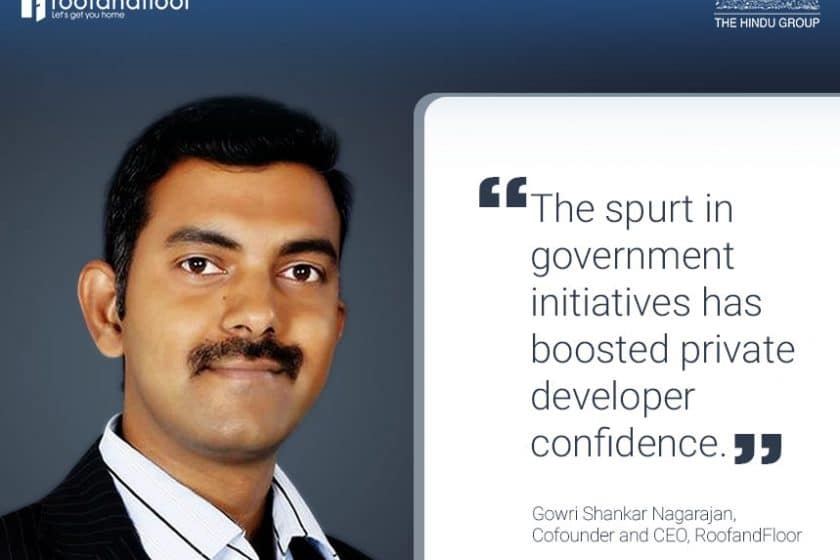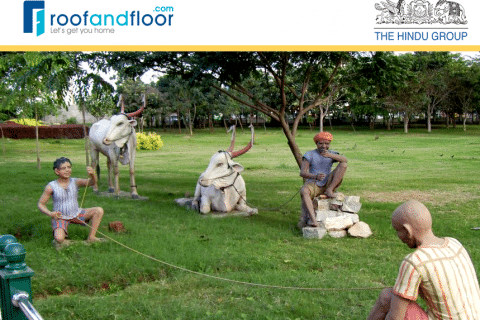Pathbreaking initiatives by government institutions, collaboration with private developers, and availability of cheap finance are set to drive the affordable housing sector in India.
India is a nation of contrasts – culturally, socially, and economically. While our unique cultural contrast gives us our secular identity, the economic, and social divide, often acts as a major hindrance to the country’s progress.
Need for affordable housing
The need for affordable housing in India can be gauged by the country’s growing urban population. From 109 million in 1971, the population increased to 377 million in 2011 and is further projected to touch the 600 million mark by 2030. This clearly indicates that the demand for housing, coupled with improved infrastructure, is perennial.
Below are some of the estimates that point to this:
- Housing shortage of 18.78 million houses during the 12th plan period, out of which 95.6% was in the economically weaker and lower income groups
- Slums and informal tenements were estimated at 65 million as per Census 2011
Migration is another major factor fueling urbanisation. Further, the real estate sector is a major component of the Indian economy as it is the second largest employment generator after agriculture. I believe that a boost to affordable housing will not only provide shelter to Indian citizens but also significantly improve the GDP and finally provide a quantum leap to the Indian economy.
Changing times: Government push for affordable housing
The Union Cabinet, chaired by the Prime Minister Narendra Modi, has come up with an ambitious plan of “Housing for All by 2022” – which is specifically aimed at urban areas. Some of the salient features include:
- Promotion of affordable housing for the weaker section through credit-linked subsidies
- Affordable housing in partnership with public and private sectors
- Subsidy for beneficiary-led individual house construction or enhancement
- Rehabilitation of slum dwellers with participation of private developers using land as a resource
A Central Government grant of Rs 1 Lakh per house (on an average) will be available under the slum rehabilitation programme. Also, a significant interest subsidy of 6.5% on housing loans availed up to a tenure of 15 years will be provided to the Economically Weaker Section (EWS)/Lower Income Group (LIG) categories under the Credit-Linked Interest Subsidy component. The affordable housing program in partnership and beneficiary-led individual house construction or enhancement scheme will receive a further assistance of Rs.1.5 lakh per house for the EWS category. In addition to these schemes by the Central Government, State Governments (Housing Boards) will be encouraged to take up affordable housing projects and avail Central Government grants.
Opportunities for private developers
What this means is that developers can now enjoy cheaper sources of funding, such as external commercial borrowings (ECBs), and private builders supporting affordable housing projects will also get more time for project completion – with the deadline extending to five years, up from the current three years.
Private developers will also be able to avail a full year’s exception to pay tax on completed but unsold units. Adding to the above SOPs, the Central Government has already approved construction of over 16 lakh affordable houses under the Pradhan Mantri Awas Yojana (PMAY).
Developers can now add affordable housing projects as new avenues of growth, along with the luxury and premium housing segment. Many private players are now eagerly undertaking affordable housing projects.
Attractive financing for borrowers
With the government push and involvement of private developers to bridge the housing gap, it also makes sense if borrowers can avail cheap finance to drive demand.
Aspiring borrowers can now avail tailor-made loans with interest rates ranging from 8.5-9%. Borrowers can also avail up to 85% finance for housing units that are ready-to-occupy or nearing completion. Housing Finance Corporations (HFCs) are also making finance more accessible to self-employed professionals and small businessmen who would traditionally find it difficult to get credit from mainstream lenders.
The demand for affordable homes is predicted to rise over the next decade. The massive efforts by government institutions, collaboration with private developers and builders, and availability of cheap finance are set to push this sector.
The road ahead!
Affordable housing is the need of the hour. However, in order develop it on a larger scale, there are certain issues that need to be addressed at the earliest.
The government should focus on incentivising developers in terms of extra Floor Space Index (FSI) and tax benefits. Click To TweetThe schemes for redevelopment and slum rehabilitation should be developed with incentives that generate returns for the developers. Mass housing zones should be included in the Comprehensive Development Plans (CDPs). Few cities have dedicated zones in their master plans for affordable housing, which can be replicated in other cities as well.
We can also take cues from other countries like Singapore where nearly 80% of the population resides in social housing. The country’s housing policy strongly emphasises homeownership by providing substantial subsidies to first-time homebuyers.
Further, a stringent framework for implementing the policies is also important. The success of ambitious Housing for All depends on the contribution from all stakeholders, including government bodies and private players.
Lastly, rental housing should be seriously considered to address the housing shortage in urban areas.






